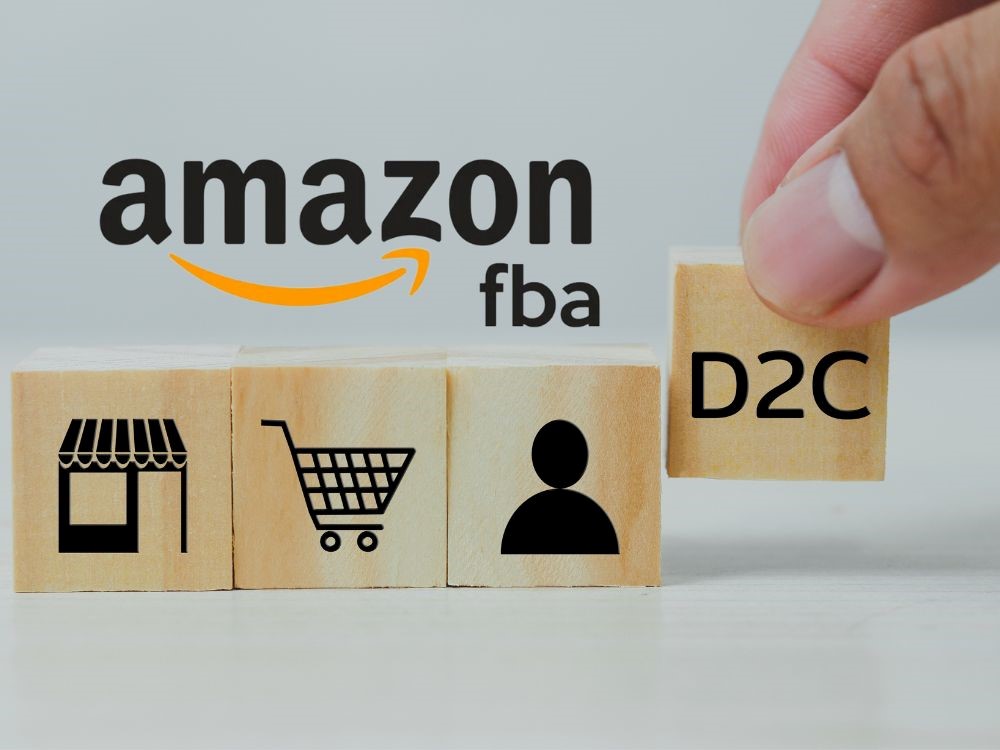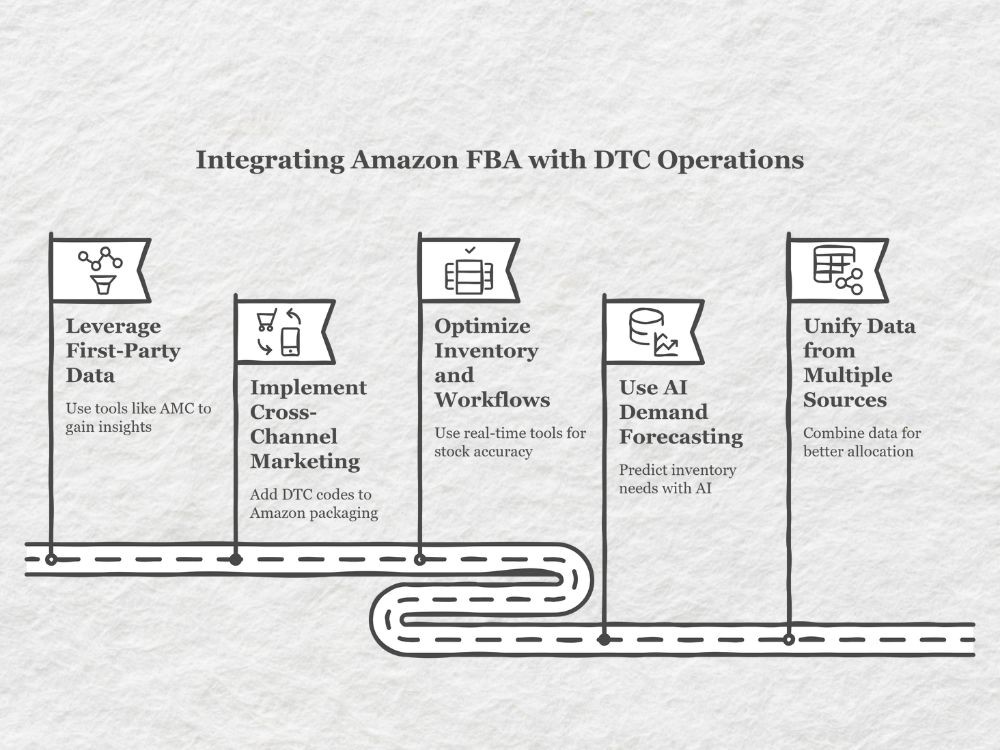Bridging Amazon FBA with DTC for Scalable Success
The evolution of omnichannel e-commerce has fundamentally transformed customer engagement strategies in the digital marketplace. Industry leaders have discovered that integrating these two distinct fulfillment channels creates unprecedented opportunities for scalable growth. Strategic integration of Amazon FBA with DTC operations enables businesses to leverage Amazon's sophisticated logistics infrastructure while maintaining personalized customer relationships. This comprehensive approach optimizes fulfillment efficiency, unlocks valuable consumer insights, and elevates customer satisfaction across all touchpoints.

Quick Guide
- Why Amazon FBA and DTC Are a Winning Combination
- Expert Strategies for Integrating Amazon FBA with DTC Operations
- Tools and Technologies to Streamline Operations
- Real-Life Case Studies of Omnichannel Success
- Conclusion
Why Amazon FBA and DTC Are a Winning Combination
The strategic fusion of Amazon FBA with DTC channels creates a sophisticated operational framework that maximizes each platform's strengths. Amazon's robust infrastructure complements DTC's personalized engagement capabilities, forming a powerful omnichannel presence.
Amazon as a Discovery Platform
- Customer Acquisition: Amazon is a powerful tool for reaching new audiences. Amazon has over 200 million Prime members and millions of daily searches,
- Enhanced Product Visibility: FBA listings benefit from Prime eligibility.
- Credibility: Shoppers often trust Amazon for fast, reliable shipping and returns.
DTC as a Retention Tool
- Personalized Engagement: DTC channels allow brands to build tailored customer experiences through direct communication and exclusive offers.
- Customer Loyalty: Utilize data collected through your DTC site to deliver customized marketing campaigns.
- Higher Profit Margins: By bringing customers back to your DTC site, you avoid marketplace fees and retain more revenue per sale.
Combination Between the Two
- Cross-Promotion: Include discount codes or branding in Amazon packaging to drive traffic to your DTC site.
- Data Integration: Analyze customer behavior across platforms to optimize strategies for acquisition and retention.
Expert Strategies for Integrating Amazon FBA with DTC Operations
Integrating Amazon FBA with Direct-to-Consumer (DTC) operations can elevate scalability and improve customer engagement. Here’s how to do it effectively:
Leveraging First-Party Data
- Amazon Marketing Cloud (AMC): Use AMC to track customer behavior across platforms, gaining insights to refine marketing strategies.
- Hashed Data Integration: Upload hashed first-party data to AMC to identify customer overlaps between Amazon and DTC, enabling tailored outreach efforts.
Cross-Channel Marketing Tactics
- Amazon-to-DTC Funnels:
- Add DTC discount codes to Amazon packaging.
- Offer exclusive deals for Amazon buyers to shop directly on your website.
- Drive External Traffic: Use social media and email campaigns to direct traffic to Amazon listings, boosting visibility and sales.
Inventory and Workflow Optimization
- Real-Time Synchronization: Use integrated inventory tools to maintain stock accuracy across Amazon and DTC, avoiding overstock or stockouts.
- AI Demand Forecasting: Predict inventory needs with AI to reduce waste and prevent missed opportunities.
Unified Data Analysis
- Consolidate Data: Combine insights from Amazon, DTC, and tools like D8aDriven for a holistic view.
- Predictive Analytics: Allocate marketing spend and inventory efficiently with performance-based predictions.
Leading eCommerce platforms are increasingly relying on premium fulfillment services to meet growing consumer expectations. Learn how these services can elevate your business.

Tools and Technologies to Streamline Operations
- Inventory Management: Helium 10, RestockPro, or SellerCloud.
- Analytics and Reporting: Amazon Seller Central, Google Analytics, D8aDriven.
- Marketing Automation: AMC, Klaviyo, or Google Ads.
- Order Fulfillment Tools: ShipStation or Skubana for syncing FBA and DTC orders.
Real-Life Case Studies of Omnichannel Success
Amazon Go Stores
Amazon Go transforms retail by integrating technology into physical stores. Customers skip traditional checkouts—purchases are automatically linked to their Amazon accounts. This seamless online-to-offline experience highlights how physical stores can enhance digital convenience, driving customer satisfaction.
Amazon Prime
Amazon Prime unifies customer interactions across multiple channels by offering benefits like exclusive deals and fast delivery. This creates a single customer view, enhancing personalization and loyalty. By tying customers into its ecosystem, Amazon has seen increased retention rates and new customer growth.
Adobe’s Omnichannel Strategy
Adobe leverages Amazon Connect to unify its voice and omnichannel strategies. By improving data insights and response times, Adobe enhances customer service capabilities, demonstrating how Amazon's tools can elevate omnichannel customer experiences.
CI Financial’s Call Center Overhaul
CI Financial used Amazon Connect to modernize its call centers, enabling agile IVR updates and better data analysis. This integration improved customer experiences and efficiency, showcasing the service potential of Amazon’s infrastructure.
PacSun & Amazon Partnership
PacSun partnered with Amazon to provide same-day delivery and online-to-store pickup options through the Amazon app. By leveraging Amazon’s logistics, PacSun extended its omnichannel presence, blending traditional retail with digital efficiency.
To stay competitive in the eCommerce space, mastering supplier relationship management (SRM) is crucial. Discover top strategies for finding the best SRM.
Conclusion
Integrating Amazon FBA with DTC operations is vital for sustainable growth, leveraging data, technology, and a customer-first approach to optimize omnichannel success. By uniting the strengths of both platforms, businesses can enhance efficiency, personalization, and customer loyalty.